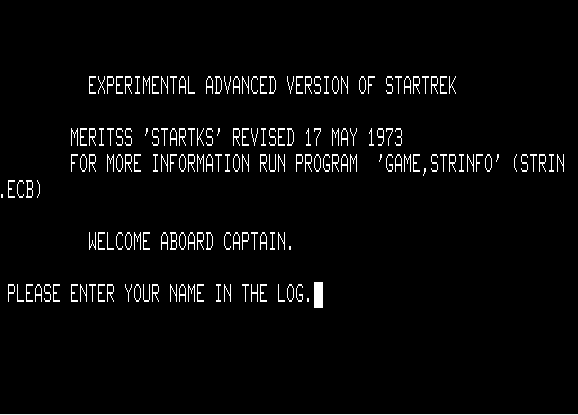
– Lieutenant Narwhal, it’s time for your yearly mission on the USS Enterprise!
– I refuse! We said “no more Star Trek-clones”, whether Mayfield’s 1971 Star Trek, Char’s 1973 Trek73 or the Daglow/Peterson probably-1974 Star Trek.
– Well, check the title. We plugged the gap in the year line-up!
We open on the archetypical Star Trek situation: a Klingon ship is in range, it’s hostile and I must destroy it. Today, my hapless victim is the KHC-88.
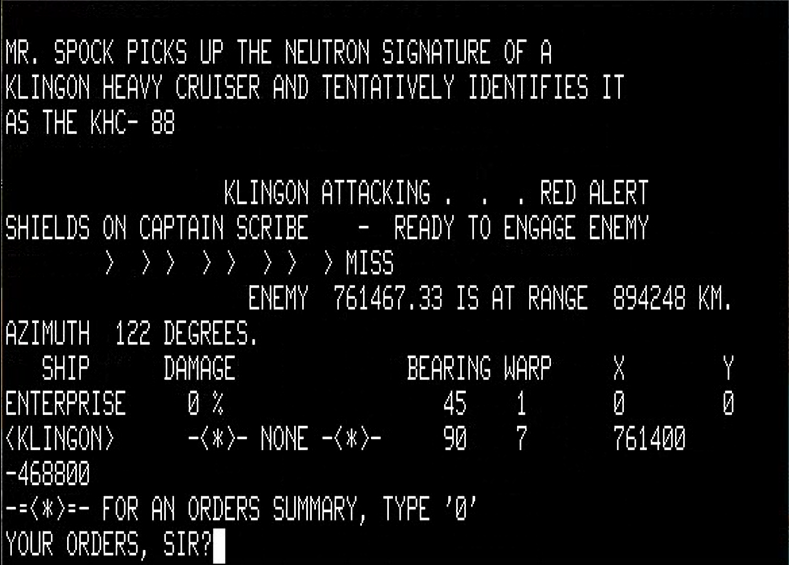
There are 4 tactical options and 6 types of reports.
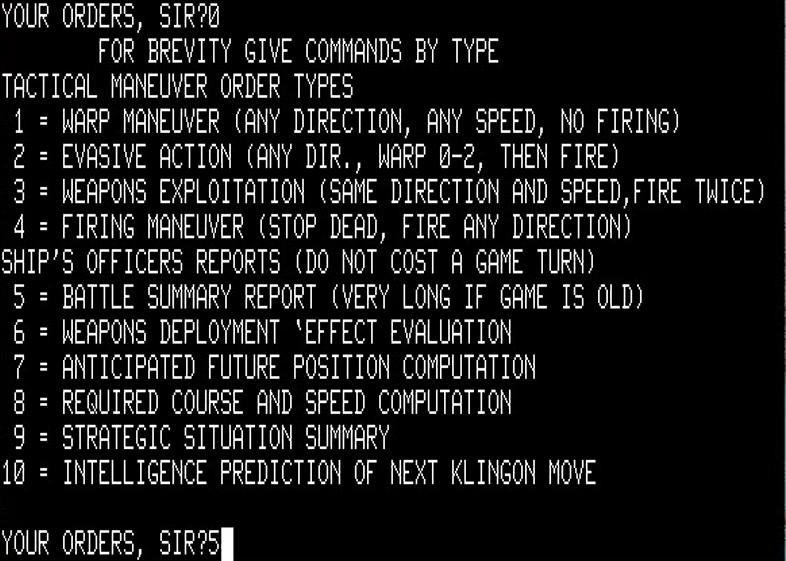
Most Star Trek would give you the bearing TO the enemy, but this Star Trek is one of the earliest ones, so you’ll have to do some trigonometry, or if you can’t be bothered you can ask for some computation (option #8) and then input it.
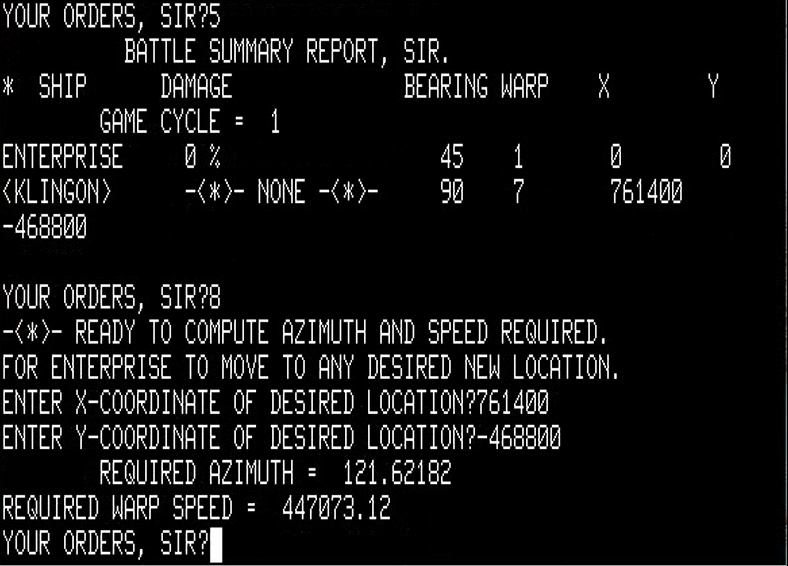
Once I am heading toward the enemy, I start shooting. I am out of range, but it looks like the Klingons do not realise it and execute a violent manoeuvre that damages their ship!
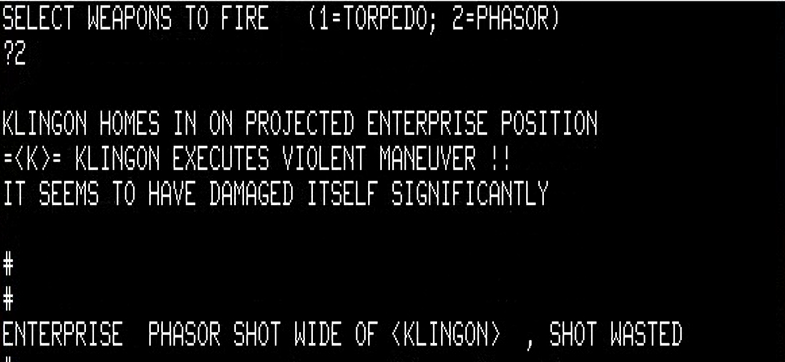
Once I have the correct direction, I can shoot twice a turn, so I shoot two torpedoes. Torpedoes can only shoot at targets right in front of them (with a narrow 5° angle), but since I am heading toward the enemy, that’s good enough.
It’s a hit on the Klingon ship!
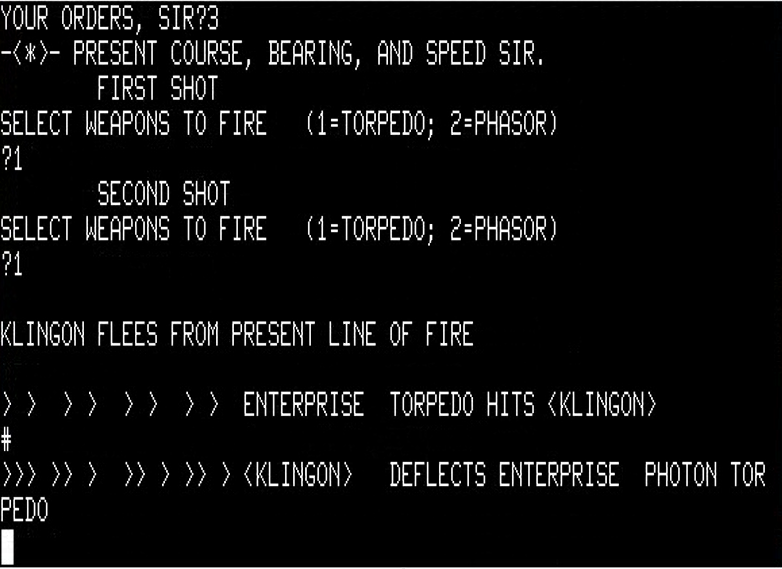
And that’s pretty much all there is. I keep shooting torpedoes every turn until the Klingon ship turns away to flee, which forces me to calculate a new heading before resuming my attacks. Eventually, the Klingon ship blows up and I am victorious.
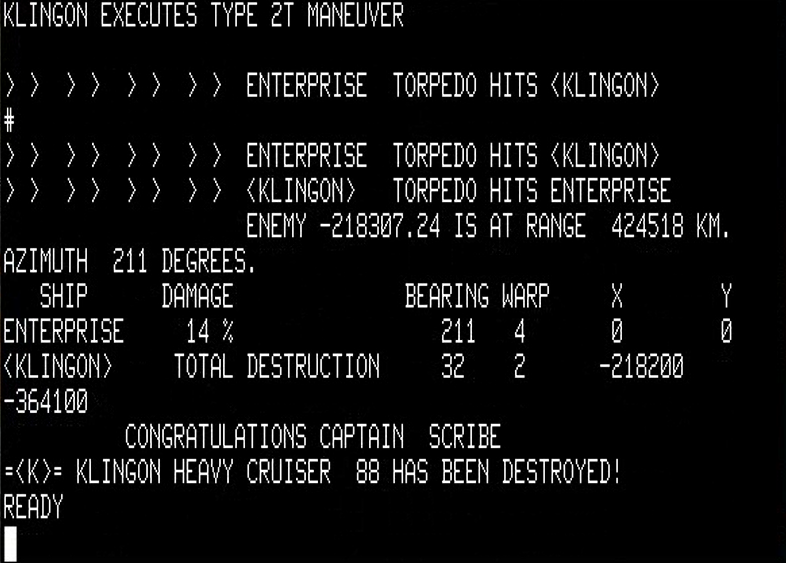
I played at difficult 2/4 and the manual stats that “it is rumored that no one has been able to win 3 consecutive games of STARTRK at the Grandmaster level”, which I entirely believe given how easy it is to pump up difficulty in this kind of game. However, the game does not have enough meat on its bones to warrant a replay.
This Star Trek passed my threshold for notability for two reasons. The first one is the author: Colonel William Frederick Luebbert (1927-2017).

Luebbert was an important character in the computer history of the US Army. An early amateur of electronics (he had a radio operator licence at 15), he joined the Army in June 1945, only to be assigned to West Point instead of being sent to the front. After a tour in occupied Germany, Luebbert became one of the Army’s preeminent specialists in computers, being involved from 1958, among others, with the first mobile computer the US Army had: the trailer-mounted MOBIDIC. In 1961, he joined the academic staff of West Point and along with Colonel Charles Schilling established the Academic Computer Committee (December 1962) which pushed radical changes in the cadets’ training: “every Cadet [from the first year] should have practical exposure to computers, including the writing, running, and testing of computer programs to solve real problems.” This objective was ambitious, particularly given that at that point all the computing of West Point was represented by one (1) General Electric 225 mainframe computer. Other objectives were even more ambitious, including the idea that eventually there should be a computer in every classroom – something that would not be possible before 1980 – three years after Luebbert’s retirement.
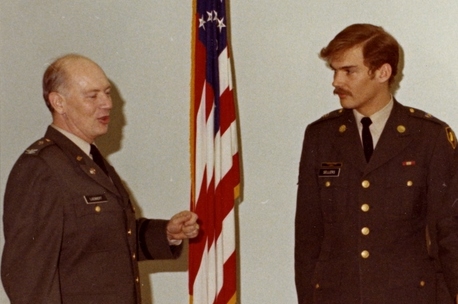
The second reason is the date. Luebbert’s Star Trek is a “tactical” Star Trek, but it predades Trek73 that set the genre’s standard. I don’t know exactly when it was first published: this game, like many others of the era, was found on the Minnesotan MECC/MERITSS network and saved from oblivion by Ralph Hopkins in 1977. However, a comment in the code states that the MERITSS version was revised on the 17th of May 1973. As Trek73 was finished around May 1973 and not disseminated before the end that year, Luebbert’s Star Trek version came first.
It is impossible at the moment to date it more accurately, but it is likely, in my opinion, that this Star Trek was first published in 1972, if not 1971. To be revised on the MECC network in May 1973, it must have been ported from the West Point’s mainframe, which typically would happen when students or staff moved from one university to another. This sort of movement also typically happens at the beginning of an academic year, so in August or September 1972. I am going to eschew my usual practice of logging “safe” release dates to log this one as a 1972 game: what’s important is that it arrived before Trek73, and a 1972 tag conveys exactly that!
Sources:
- The SOL-20 Extended Cassette BASIC Programs
- Colonel William F. Luebbert’s obituary
- Colonel William F. Luebbert’s obituary #2
- A Two-Edged Sword: Computing At West Point, by Kenneth L. Alford, Gregory J. Conti, David B. Cushen, Eugene K. Ressler, Jr., William Turmel, and Donald J. Welch – found here
- Who Remembers, Teaching Tools at the USMA, West Point Association of Graduates
- A testimony from Goldcoat Gabe Sellers. The Goldcoats were the computer technicians of West Point, who wore (on Luebbert’s initiative) a yellow lab coats over their uniforms, as can be seen in one of the pictures. It is where I found the picture of Colonel Luebbert I used.